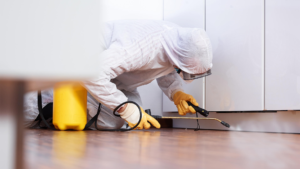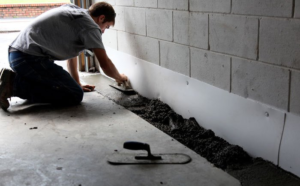Despite a lot of pop culture stigma and misconception, sober living offers individuals a safe environment to transition back into society. These homes offer peer support and access to job assistance programs.
In addition, sober living offers residents a place to practice the life skills they learned in treatment. These skills include money management, interpersonal communication, and healthy coping strategies. Click Visit Website to know more.

A safe environment is essential in the early stages of recovery. It helps to prevent relapse by providing a supportive and structured environment for people who are transitioning from treatment to independent living. It also provides a place to build relationships with other people in recovery. However, it is important to remember that sober living is not a cure for addiction. In order to achieve long-term recovery, it is necessary to find a way to address underlying issues that can cause relapse.
Most sober homes are run by a house manager and offer a set of general rules. These rules are enforced by the house manager, and residents are expected to follow them. Often, the rules include a curfew and restrictions on visitors or pets. They also require that residents attend group meetings and complete household chores. In addition, residents are required to pay rent and bills on time.
Some sober living communities provide support groups and other social activities to help members develop healthy hobbies and interests. They may also offer educational and employment assistance. These programs can help people gain skills and return to work in a field that suits their qualifications. They can also help them overcome boredom and stress, which are common triggers for relapse.
Many sober homes have strict rules about drugs and alcohol and discourage substance use in the home. They usually require that residents attend regular drug and alcohol screenings. They may also require that residents have a sponsor and participate in meetings and counseling. Some sober homes also limit the amount of time a resident can spend outside the home.
Unlike halfway houses, sober living homes are typically not filled with people who have been incarcerated. These homes are primarily for people who have completed a treatment program and want to continue in sobriety. They are also a good option for people who are unable to live independently, but have a strong commitment to sobriety.
In addition to helping people in recovery develop a sense of responsibility, sober living also improves memory. Sober people are able to recall details of conversations and meetings, and can often recall names better than those who haven’t entered a sober lifestyle. This improved memory can help individuals with a variety of tasks, including planning and scheduling events.
It’s a transitional period
Regardless of the type of treatment program an individual attended, the transition back to life after addiction can be challenging. While residential treatment programs offer a safe environment, it is sometimes difficult to move back into home life with all its responsibilities and temptations. Luckily, there are sober living facilities that can help. These facilities allow individuals to return to work, school, and other aspects of their lives without triggering cravings for drugs or alcohol.
During the time they spend in sober living, individuals can regain their independence while still enjoying support from others. They also learn valuable life skills that they can use to sustain sobriety. These skills can include budgeting, cooking, cleaning, and laundry. They can also be useful in building new relationships. These friendships can provide support during difficult times and help prevent relapse.
In addition to providing a safe place to live, sober living homes often provide access to job assistance programs, education, and vocational training. They can also provide a variety of recreational activities and social events that can help residents establish new friendships and interests. While these resources can be helpful, they should not be viewed as a cure for addiction.
Sobriety can also improve an individual’s physical health. This is because abstaining from substance abuse can reduce the risk of developing serious health problems such as liver damage, cardiovascular disease, and diabetes. It can also increase an individual’s energy levels and improve their mood. In addition, a sober lifestyle can improve an individual’s sleep patterns and eating habits.
Another benefit of sober living is a greater sense of self-awareness. Sobriety provides a space for introspection and exploration of an individual’s values, aspirations, and personal growth. It also fosters a deeper level of self-acceptance and increased productivity. This boost in productivity can be attributed to improved organizational skills, heightened focus, and a clearer mind. Individuals may even notice a difference in their appearance, with clearer skin and hair. All of these changes can lead to a more positive and healthy life.
It’s a place to practice new skills
A sober living environment is a place to practice and improve life skills that were learned during treatment. It is also a safe place to build healthy relationships with others in recovery. This is the first step in rebuilding a stable and fulfilling social life, but it may take time to build trust in new relationships. The goal is to establish positive relationships that are free of drugs and alcohol, so that you can continue on the road to sobriety.
A successful transition to sober living is often a balancing act, and the best way to keep sobriety on track is to develop good habits. This includes establishing regular exercise routines, eating a balanced diet, and getting a sufficient amount of sleep. This will give you the energy and motivation to keep up with your responsibilities, and will help restore your overall health and well-being.
It’s also a good idea to get a handle on your finances, which is why many sober living homes offer support services for residents. These services include debt management, housing counseling and assistance, and budgeting. These services can help you overcome financial obstacles that may be keeping you from staying sober. They can also help you find the right job to support your sobriety.
SLHs are often located on the campus of addiction treatment facilities, but they can also be independent homes or apartments. They may have specific rules for residents, including curfews and Twelve Step meeting requirements. Some have restrictions on travel or pets, as these can disrupt the daily routine of a person in sobriety.
The key to a successful sober life is recognizing and communicating your boundaries. Setting clear boundaries prevents relapse and promotes a healthy lifestyle. It’s important to set boundaries with your family, friends and coworkers, too. Creating boundaries is not easy, but it’s worth the effort.
Relationships are one of the biggest challenges in early recovery. Addiction often puts a damper on existing relationships, and people may be reluctant to invest in new ones. However, you can build meaningful relationships in sober living by being honest and focusing on sobriety. Trying to balance your recovery with a new relationship is challenging and can lead to relapse, so it’s best to wait until you are fully sober.
It’s a place to build relationships
Sober living homes provide a supportive environment where individuals can develop healthy relationships and strengthen bonds. They offer a range of services and resources to help people reintegrate into society and lead a life free from addiction. These include job assistance programs, educational opportunities, and support groups. In addition, many sober living homes offer recreational activities that allow residents to spend time with others who are also sober. These social activities can help reduce stress and boredom, which are common triggers for relapse. They can also increase feelings of community and connection, which can make people feel more confident about their sobriety.
Aside from the social benefits, sobriety can have positive effects on the individual’s physical health. By maintaining a sober lifestyle, an individual can drastically reduce their risk of health problems such as liver damage and cardiovascular disease. In addition, sobriety can improve an individual’s mental clarity and focus.
When deciding on a sober living home, it’s important to find one that is safe and reputable. It’s also a good idea to tour the facility before you move in to see if it’s right for you. Most SLHs are not covered by insurance, so be sure to check out payment plans and scholarships available for those who cannot afford treatment.
Those who are pursuing sobriety may find that their existing relationships suffer in the wake of addiction. Developing and maintaining new relationships can be challenging, but sober living communities offer the opportunity to connect with others who share a similar passion for sobriety. These relationships can help people rebuild their sense of self-worth, and they can foster the trust and understanding needed to repair fractured relationships.
Living in a sober living home requires individuals to learn how to set boundaries and respect their fellow residents’ autonomy. They must also be able to express themselves clearly and actively listen to others. In addition, they must be able to accept responsibility for their actions and apologize when they have hurt others. Lastly, they must be able to resolve conflict peacefully. This process can be emotionally taxing, but it is necessary for the individual’s sobriety and recovery.

